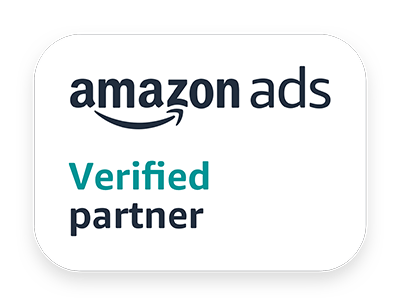
Amazon PPC agency
Amazon Advertising made easy!
Did you know that professional Amazon advertising and bespoke advertising campaigns are the key to successful product launches and gaining visibility based on keyword research, Google ads, sponsored display ads, and more? If you think about it, your paid Amazon ads are only as good as your product listing, which many Amazon PPC agencies don’t even cover.
We, on the other hand, are a full service Amazon PPC management service, so that means everything related to PPC campaigns, PPC management, and Amazon sponsored product ads are a part and parcel of our amazon PPC agency services.
Amazon Advertising with us as your Amazon PPC Agency
Alas, Facebook has updated its algorithm again (we’d be surprised if it hadn’t!). This means that now even more brands are capitalising on the power of PPC campaigns and tailored Amazon advertising campaigns to reach their target audience on social media.
While Google ads and amazon PPC ads have been around for years on social media, they are still considered a very affordable, practical, and measurable way of getting your product right under the noses of millions of prospective buyers.
As of late, however, Amazon PPC management services have really taken the world of online selling by storm, leaving both Google and Facebook in its dust. Unless you’re leveraging PPC advertising according to your UK product and target audience, you are way, way behind the competitive curve!
When you work with an Amazon PPC management agency, you start to understand how a bespoke PPC strategy, for example, can help you gain maximum visibility, especially during those all-important product launches, as you start popping up in search results.
With Chris and his team acting as your expert PPC Amazon agency and PPC management consultant, you can nail each and every aspect of sponsored brand ads, amazon sponsored brands, and much more, making you nothing short of a rock star in front of your target audience.

Incredible product launches
Your chance to enter the world’s largest ecommerce business marketplace with a bang! Get noticed right away with our tried-and-true amazon PPC campaigns, and more.

Build Better Brand Awareness
As an Amazon marketing agency with decades of experience and the results to show it, we set up your brand perfectly so that it’s featured in everything from store spotlights to sponsored brand videos, search results, and more.

See Unsurpassed Growth
As a leading Amazon ads agency, we’ve helped many eCommerce brands succeed and overtake the competition, where they have even overtaken their own growth projections! Our bespoke ROI metrics tailored to each business helps you gauge and boost both your product’s and your brand’s performance.e..
We help optimise over 40+ brands across seller and vendor central
Case Study
Zen 8 Swim Trainer
Category: Health & Beauty. Ads Spotlight: Sponsored brand Video

Sponsored Brand & Sponsored Product placement allowed us to give Zen8 an impressive 17.5% ACoS with a 10.8% ACoS on their sponsored brand video
“The Ecommerce Intelligence Team are a pleasure to deal with, they are pro’s in their field and we are super happy with the results they have given us”
Charlotte Pegg, Zen 8
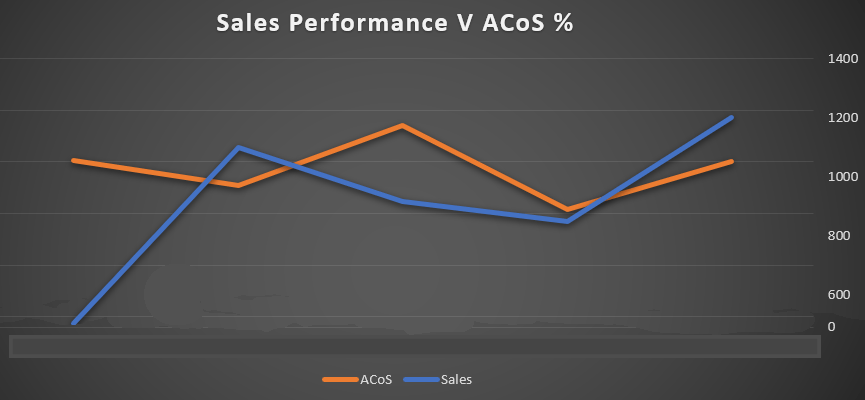
How did we improve sales performance in just 3 months?
Our team worked tirelessly to maintain an optimal ROI while helping our client, who had no reviews or past sales history, grow a completely new and exciting brand. And, we did this using their own design library and professionally shot video. Coupled with our well-optimised and high-conversion listing, we gave Zen8 a clear success structure and high-performing ad strategy.
How Amazon advertising campaigns work
Sponsored Products
The core of Amazon advertising begins with a well-optimised sponsored brands ads campaign, so that you’re listing starts popping up high on Amazon’s search results pages
Sponsored brands
We generate awareness toward your brand through store spotlights in your category, displaying the top three products and a dedicated video to achieve the most impact.
Sponsored Display
We identify and target your key competitors, all the while helping you engage with customers who have already engaged with your brand on Amazon.

Amazon Accredited

Real Transport Reporting
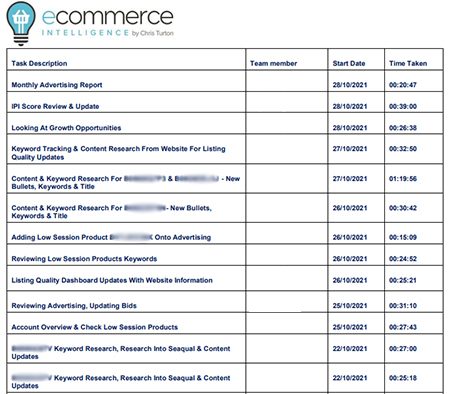
As a leading amazon PPC strategy 2022 expert, transport reporting is a core focus of our day-to-day work and downright imperative to the development of the product cycle, specifically, in the early stages..
Chris says…

“My in-house team and I are unapologetically experienced in all areas of Amazon advertising, bringing you the best ROI – in the form of advertising cost of sale or ACoS. We strive hard to keep this figure as low as possible, the lower it is, the better your listings will perform. However, Amazon advertising is only as good as the ad itself – in Amazon’s case, the ad is your product’s landing page, and this is where our key focus is from the outset: helping you get the best of both worlds
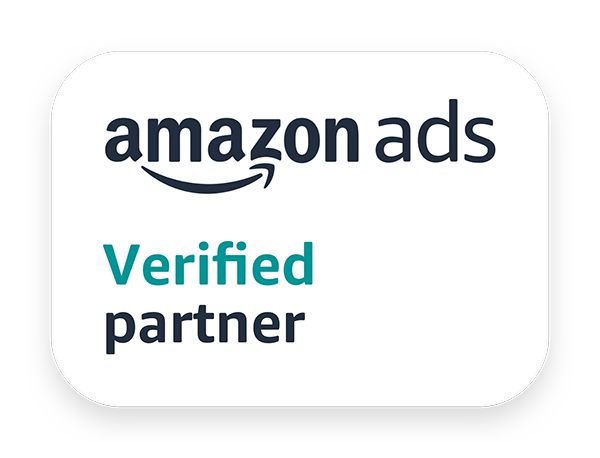
An Amazon Advertising partner you can always bank on
We are proud to be an accredited Amazon ads agency with the Amazon Partner Network.
Additionally, our Amazon PPC management service (both paid PPC advertising and organic digital marketing for listings) specialises in crafting absolutely flawless product listings, improving your conversion rates across the board.
Our PPC campaign and organic ad campaigns team works tirelessly to create beyond superb ROI for all your products, be it through sponsored brands or branded ad campaigns. Below, you can understand some of the ways in which we craft bespoke amazon advertising campaigns as an Amazon ads agency, and how it can help you.
Devising the best PPC advertising strategy: Taking you to the top!
Before we can talk about strategies for Amazon PPC campaigns or how our Amazon PPC services help to position your listings at the top, it’s worth understanding what Amazon PPC is at the core and why it’s so important to any seller looking to make it big on Amazon.
Amazon PPC explained
Amazon is world’s largest eCommerce platform built exclusively to cater to 3rd party sellers, allowing them to come up with incredibly unique product ad campaigns, sponsored brand ads, and more. Every time a user or prospect clicks on your ad to see what it’s all about, you are charged a small fee. That’s essentially the crux of how PPC campaigns work.
Now, let’s understand some of the key PPC metrics that are at play:
ACoS – This refers to the Advertising Cost of Sales, and if you’ve ever wondered “what is ACoS” or “what is a good ACoS on Amazon”, then this is what you should know: ACoS is the percent of attributed sales spend on advertising. That’s precisely how Amazon describes it, and it couldn’t be more accurate!
If you want to calculate your ACoS, then you’re going to divide your total ad spend by your attributed sales. So, let’s say you’re spending £1.5 on advertising which leads to an attributed sales of £15 – your ACoS will be 1.5 / 15 (%), which is 0.10.
Attributed sales – This figure indicates the total product sales you generate in a week’s worth of ad clicks. Your sales data may take up to 48 hours to populate, so you will typically not find it in the current date range. In fact, it can even be delayed to yesterday’s date range. You can view the individual sales totals for both your advertised products and other products by going into your Campaign performance report.
Impressions – Impressions are the total number of times your Amazon ads are displayed. After having identified impressions, you may need to wait up to 3 days to remove any invalid ones from the reports you generate.
Clicks – Exactly as the term implies, clicks are the total number of times your visitors click on your Amazon ads. After you identify this metric, (again) it can take up to 3 days to remove any invalid clicks from the reports you generate.
Amazon advertising and PPC campaigns in 2024 to fuel your strategies
Amazon advertising campaigns have been proving to be a tough proposition for most sellers, especially at the rate Amazon keeps updating its algorithm and how competitive things have gotten on the largest online selling marketplace in the world.
However, working with expert Amazon PPC specialists who can craft a bespoke Amazon advertising strategy for you means that more than half your work is done already:
Working your way up with the right keyword research
Whether you are just starting out as a seller or gearing up for an exciting product launch, you really, really need to sit down and craft a PPC campaign strategy first, which includes long-tail keywords. Now, the key thing to understand is that once you get a taste of success with the long-tail keywords, only then can you move up and target the more generic and frequently-searched keywords – which your competitors are likely already targeting.
This Amazon advertising strategy always (always!) works, especially if you are a new seller who is trying to compete with more established ones in the marketplace. You see, if you start targeting the highly searched and common keywords first, you will end up draining your advertising budget without having your listing get any real exposure, or even attracting the desired traffic and conversions, for that matter. Why? Because these keywords come with a lot of competition and CPC (cost per click).
Even if you manage to get a fair amount of ad impressions for your listings, your chances of making sales will be comparatively low. This is because the well-established Amazon sellers are always strategically better positioned in the Amazon marketplace. They will automatically have a better chance of success with the generic keywords than you!
Rank optimisation through a customised Amazon PPC strategy with a Amazon advertising partner.
For any given keyword you want to rank for, you will need a bespoke Amazon PPC strategy to improve both the ranking and position of your product listing so that it pops up high on Amazon’s SERPs (search engine results pages). The general idea is to have at least three unique PPC Amazon ads sets, with each one having significantly varying bids and budgets.
You will start by tracking all the top keywords related to your product listing and see how they are initially ranking on Amazon. Once you understand the listing’s page rank and position, implement this Amazon PPC ad strategy:
For keywords ranking beyond pages 5-6 – Focus on just a small handful of keywords that are already converting well. This allows you to utilise your budget more effectively by focusing on search terms that are ranking well in terms of sales (but lagging behind in the actual search results). Keep your bids conservative for these.
For keywords ranking beyond pages 2-5 – For any keywords ranking on the 3rd, 4th, and 5th pages, follow a more modern Amazon PPC management strategy which focuses on only the best-performing keywords. Keep bidding consistently over time and focus on keywords which are getting you the most sales. Then optimise your Amazon advertising campaigns accordingly, using the exact same keywords. Eventually, queries will generate more conversions, and Amazon will enhance the organic ranking of your listing automatically!
For keywords ranking beyond pages 1-2 – At last, for all keywords ranking on the 1st and 2nd page, go ahead and use a more aggressive Amazon advertising strategy. In fact, you should be as aggressive as you can with the bidding, since you are just a few spots away from the prime positions!
Focus on different keyword variations to boost sales. Create a separate PPC campaign just for this and then set your match type phrase to integrate the most number of variations possible.
Group variations together
This is an important step when it comes to Amazon advertising as it will improve both brand visibility and awareness. If you have product variations, they will most likely be listed as child ASINs.
Under this scenario, it is not ideal to run amazon advertising campaigns individually for each variation; this will cut heavily into your budget and your variations may even compete amongst each other for the ads. Therefore, it’s best to group all the individual variations into a single package and sell it under just one unique ASIN.
Don’t forget to target indirect and/or alternative keywords
Targeting alternative or indirect keywords is one of the less common ways of positioning your product effectively and it has to do with the way it is presented to your target audience.
For instance, if you explain the features and benefits in a very vivid way – that is, in a way that’s both creative as well as compelling and engaging – then you can enjoy major gains as a result. But more importantly, this practice will give you a competitive edge if you target alternative and/or indirect keywords in your Amazon PPC ad strategy, as people typically turn to Amazon to find specific products, rather than do a Google search for solutions. They are not actually sure themselves as to what the ideal solution or product is until they come across something on Amazon that fits into their version of a “solution” – boom, you just got found!
This is why it’s really important to identify the specific solutions your product can address, so integrate this into your Amazon sponsored products as well.
Target your own keywords
This is an advanced Amazon PPC ad strategy but an ingenious one to help you gain better exposure. In fact, many of the leading Amazon PPC agencies either don’t share this strategy with their clients or aren’t even aware of it!
Product Targeting ads, a beta feature within Amazon, lets you target your audience through specific products and categories. It works along the same lines as Display ads, but offers you more control. The idea is to target specific ASINs so that your ads display on their pages.
Initially, it’s best to start with just one or two products for the ads. Run your advertising campaigns for a few weeks at least, then check your Amazon advertising reports to see how your ROI is doing. If it looks good, then run more ads like these for your products.
Understand your target audience’s buying behaviour
Among the key deciding factors for your PPC campaign’s success is knowing what makes your target audience tick. Once you understand where your demographic is coming from, you can set up your Amazon PPC strategy to help you convert them.
For example, if your product targets the 20-35 age group, then you should run your Amazon advertising campaigns during the evening or night hours mostly as that’s when your audience will likely be checking their phones. On the other hand, if your target audience is at-home mums and dads, you should run your advertising campaigns around noon.
At the end of the day, we’re an Amazon marketing agency that can help you execute all of the above, and then some! Our Amazon advertising services and tailored Amazon PPC management service are both designed to put you ahead of the competitive curve and keep Amazon advertising costs as low as possible. It’s all just a free initial consultation away!
The PPC Advertising mix: Understanding what a good ACoS is on Amazon
On the subject of PPC advertising, it also pays to understand ACoS (advertising cost of sales) in more detail as Amazon ad spend is governed by multiple factors, including your respective product category, target keywords and, of course, how well-optimised your products are – in addition to how well they can convert.
We advise our clients to start out on a low amount per ad group, in most cases – say, £10 a day – which typically revolves around a singular product or product variation.
We monitor the data on a regular basis to help you meet your ROI targets while keeping ACoS as low as possible. Any number between 8% and 24% indicates “good”. To learn more about Amazon advertising costs for PPC, check out this read on the True Cost of Amazon Ads.
RoAS vs. ACoS: Which one is better and how do you calculate each?
As the online Amazon advertising landscape continues to get trickier, Amazon sellers must make every attempt to understand how PPC advertising campaigns work on different platforms because the costs can very a lot between them.
Return of Ad Spend (RoAS) is used by Google specifically to evaluate how effectively your Amazon marketing campaigns are selling online. Amazon, on the other hand, uses ACoS, which nearly all vendors, sellers, and advertisers are already familiar with.
While Google will use metrics like ‘All conversions/cost’ or ‘Conversions/cost’ to define RoAS, Amazon will measure the performance of your sponsored display ads or sponsored brand ads to define ACoS.
Here’s how you can calculate each:
How to calculate RoAS
Let’s say you generate £100 in sales from an advertising spend of £25. Your ad spend is 4X.
This means that every £10 spent to make £100 in Amazon sales, your RoAS will be 10X. Spend £50 to make £100 in sales, it will be 2X, and so on.
How to calculate ACoS
Now, let’s say you generate £150 in revenue from advertising with an ad spend of £40. In this case, your ad spend comes to 40 / 150 x 100 = 26.6%
So, this means for every £10 spent to make £100 in Amazon sales, your ACoS will be 10%.
An Amazon PPC management service like ours along with tailored Amazon PPC advice can really help position you on top, giving your competitors a good run for their money! We’re an expert amazon ads agency that’s really easy to reach any day of the week: (+44) 01743 816191 (UK) | (+001) (646) 791-4154 (US).
Some Of Our Amazon PPC Clients




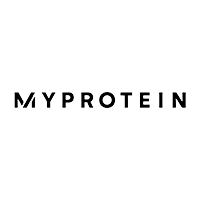

Some Other Relevant Articles From Our Blog:
- The True Cost of Amazon Ads
- What is Amazon Marketing Stream and how does it improve RoAS?
- How to Increase Sales on Amazon in 2023


